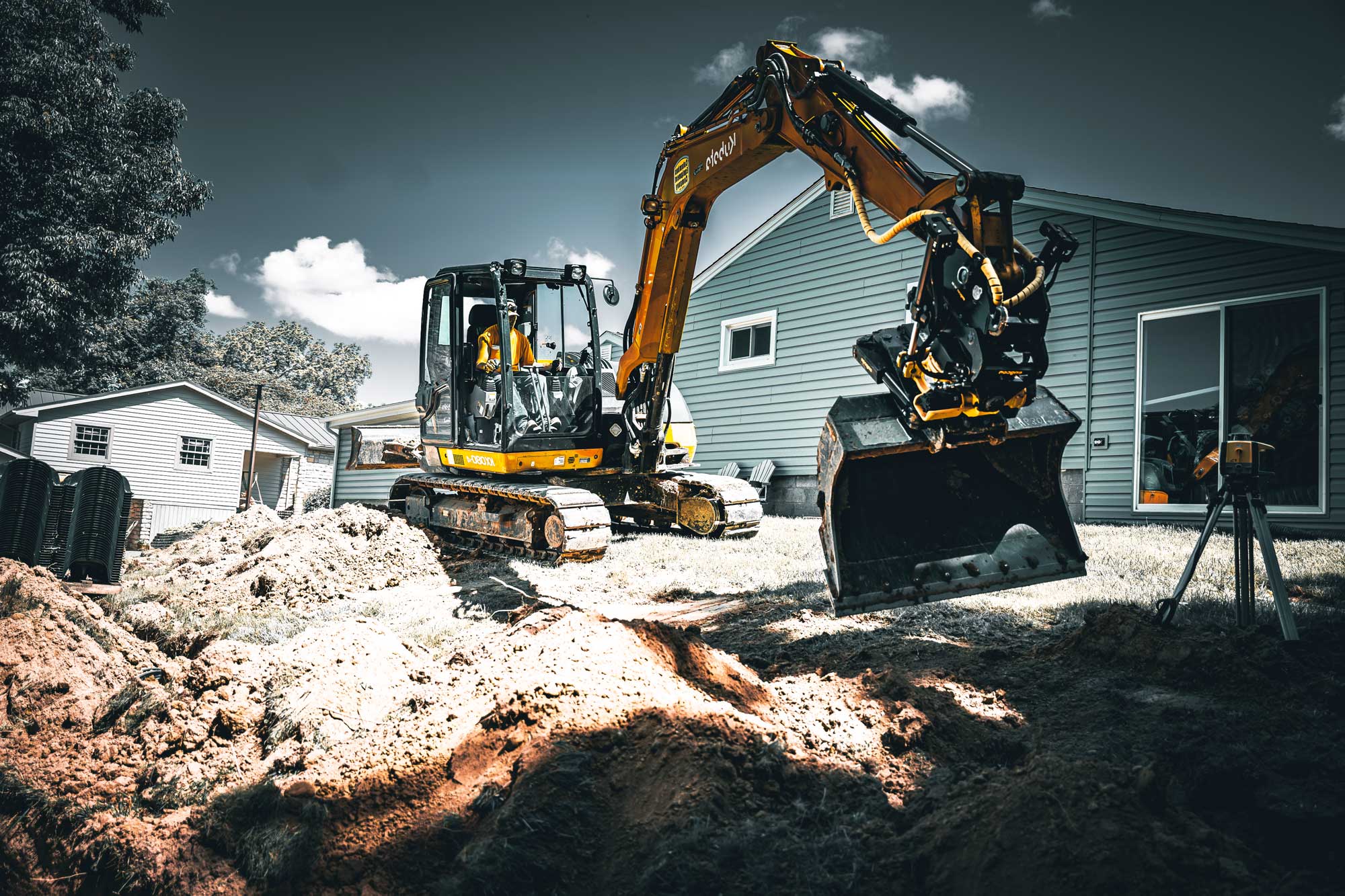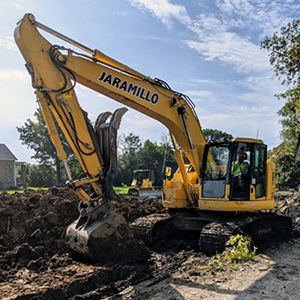Lancaster Trenching - Professional Trenching Solutions in Lancaster, Ohio
Lancaster Trenching - Professional Trenching Solutions in Lancaster, Ohio
Blog Article
Revealing the Art of Excavation: Pro Tips for Safe and Efficient Digging
As dirt is turned and earth is moved, the intricacies of excavation expose themselves, requiring a keen understanding of equipment, soil structure, security methods, and environmental considerations. The competence required to navigate these aspects effectively can indicate the difference in between an effective excavation project and a prospective disaster.
Significance of Correct Devices
To make sure the safety and security and efficiency of any type of excavation job, utilizing the ideal devices is critical. Excavation tasks differ in range and complexity, varying from little domestic landscape design work to massive building and construction tasks.
Excavators are basic items of machinery in any type of excavating operation. These functional makers can be found in numerous sizes to fit different project requirements. Mini excavators are ideal for smaller sized jobs, while bigger excavators deal with much more comprehensive projects efficiently. Backhoes are an additional crucial tools type, combining the features of a loader and an excavator in one equipment. They are useful for tasks calling for convenience and maneuverability.
Besides excavators, other critical devices includes dump vehicles, bulldozers, and trenchers. Discard trucks are crucial for eliminating and carrying excavated products, while trenchers are made use of for digging deep and slim trenches. Bulldozers master tasks that need pressing large quantities of dirt or debris. By buying the appropriate devices, excavation tasks can be completed securely, promptly, and with precision.
Comprehending Soil Structure
An extensive grasp of dirt make-up is fundamental for performing excavation tasks with accuracy and security. Recognizing the various sorts of soil is vital as it straight influences excavation methods, equipment choice, and general task performance. Dirt composition generally contains 4 primary parts: sand, silt, clay, and raw material. Each component has unique properties that influence how dirt reacts to excavation procedures.
Silt bits are smaller than sand yet bigger than clay, providing moderate water drainage and cohesion. Organic matter, such as decomposing plant material, affects dirt fertility and stability.
Before starting excavation, carrying out soil tests to identify its make-up and qualities is essential. This information aids in choosing the appropriate devices, executing safety actions, and creating excavation techniques tailored to the certain soil conditions - dump truck companies in ohio. By comprehending soil structure, excavation specialists can improve project results while ensuring security and adherence to best methods
Precaution and Methods
Comprehending dirt composition is the keystone upon which precaution and procedures for excavation projects are developed, guaranteeing the wellness of workers and the success of the venture. There are numerous key steps that need to be implemented to reduce dangers and prevent crashes. when it comes to safety and security during excavation.
Firstly, before any type of excavating starts, a complete inspection of the site ought to be carried out to determine any type of possible threats such as below ground energies, unstable soil conditions, or nearby structures that could position a risk. It is important to have an experienced individual look after the excavation procedure to make certain that all safety and security methods are adhered to purely.
Furthermore, all employees entailed in the excavation has to be effectively educated in risk-free digging practices and the correct procedure of devices. By adhering to these safety measures and protocols, excavation jobs can be completed successfully and without event.
Reliable Excavation Preparation
When getting started on an excavation job, precise planning is essential to ensure performance, safety and security, and effective results. Effective excavation planning entails numerous crucial actions that are important for the smooth execution of the task. The primary step is to carry out an extensive site analysis to identify any type of potential threats, such as below ground utilities or unpredictable soil problems. This info is important for creating an in-depth excavation plan that consists of precaution and risk reduction strategies.
When the site evaluation is full, the next step is to create a clear timeline and routine for the excavation tasks. This includes figuring out the series of tasks, equipment demands, and workforce allotment. Correct scheduling helps avoid hold-ups and find more info makes certain that the project stays on track.

Furthermore, communication among all staff member is critical during the planning phase. Clear regulations, routine updates, and efficient coordination are vital for a successful excavation job. By investing time and effort in precise planning, excavation teams can dramatically boost performance, decrease threats, and accomplish successful outcomes.

Taking Care Of Ecological Considerations
With raising emphasis on ecological sustainability in building practices, taking official statement care of environmental factors to consider has come to be an important aspect of excavation jobs. Excavation activities have the prospective to impact the surrounding atmosphere with dirt erosion, debris runoff, environment disruption, and contamination of water resources. To mitigate these dangers, it is vital to apply best techniques that prioritize environmental defense.

Additionally, proper waste administration is important to avoid dirt and water contamination. Applying procedures for the disposal of unsafe products, recycling of waste products, and minimizing using hazardous chemicals can considerably reduce the environmental influence of excavation tasks. By incorporating these methods into excavation planning and implementation, building and construction business can make sure that their tasks are not only safe and effective yet likewise environmentally liable.
Conclusion
To conclude, understanding the art of excavation calls for a complete understanding of appropriate equipment, dirt structure, precaution, and reliable preparation. By following these standards and thinking about environmental variables, excavations can be carried out safely and successfully. It is critical to prioritize safety and security and efficiency in every digging task to make certain the original source successful end results.
As soil is transformed and earth is relocated, the complexities of excavation reveal themselves, requiring an eager understanding of equipment, dirt composition, safety and security protocols, and environmental factors to consider.To make certain the safety and security and efficiency of any kind of excavation project, using the appropriate tools is vital.A comprehensive grasp of dirt composition is essential for implementing excavation jobs with precision and security. Recognizing the different types of dirt is crucial as it directly impacts excavation approaches, equipment selection, and general task efficiency. By comprehending dirt composition, excavation specialists can enhance job outcomes while guaranteeing safety and security and adherence to ideal practices.
Report this page